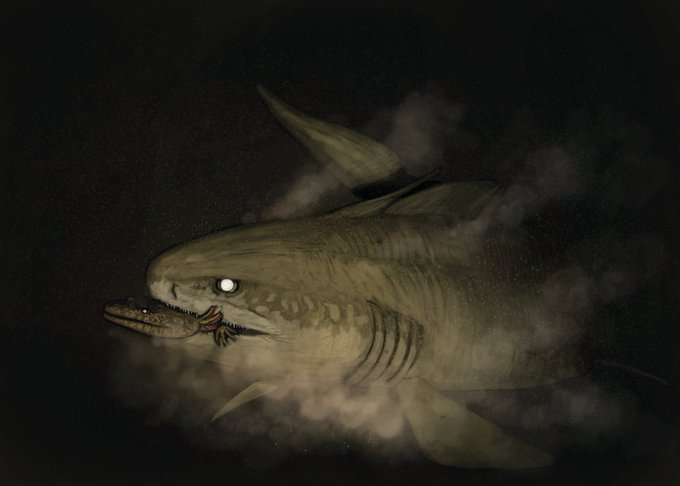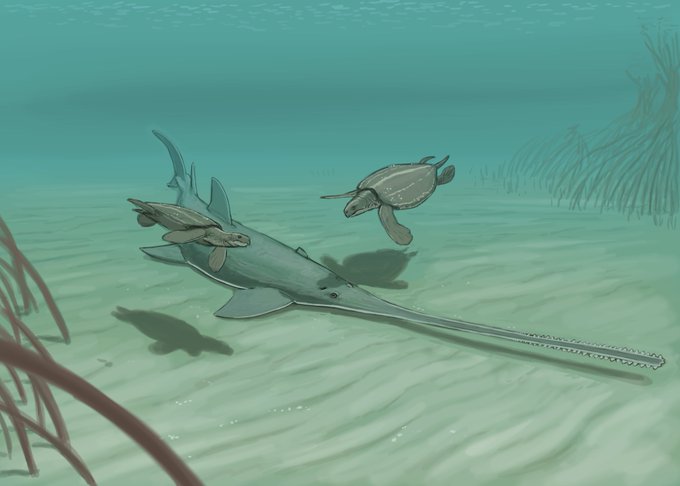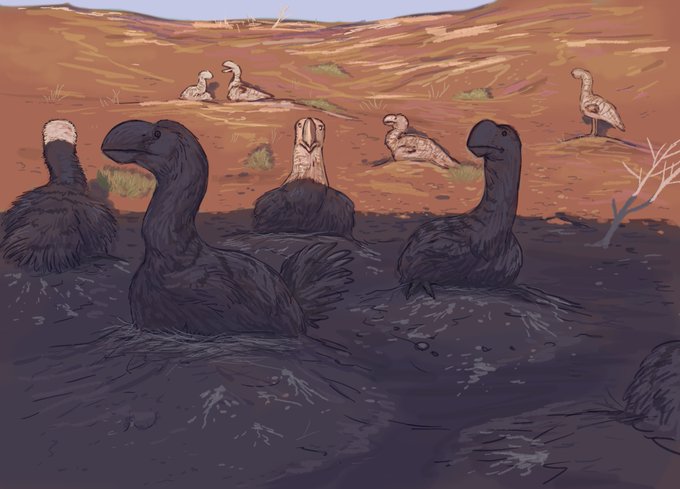EoceneのTwitterイラスト検索結果。 165 件中 5ページ目
Sketch of Early Eocene Nebraska, with Coryphodon and "Crocodylus" affinis.
Results from the #paleostream
Trachymetopon, Pontolambdodon, Bretesuchus and Sinophoneus.
#paleoart #crocodile #pantodont #sciart #anteosaur #coelocanth #eocene #jurassic #fish #permian #synapsid #scicomm #sketch
Neuroanatomía de una #tortuga botremídida, nuevo trabajo de M. Martín-Jiménez (@paleosoriano) y A. Pérez-García (@Tortugologo) publicado recientemente en #Diversity:
https://t.co/Bipfhhg8oP
#Eocene #France #turtle
A male Septencoracias returns home with....a lizard :p
#paleoart
#eocene
#croaciformes
Phiomia was an early member of the Proboscidea; distantly related to true Elephants. Remains are known from the Faiyum region of Egypt; from the Late Eocene to the Early Oligocene.
Pages 6–7 of PALEOCENE #3 are complete! More here for patrons: https://t.co/JieOQbA235
In other tetrapods, the openings are either very small or totally absent (the palate is formed entirely by bone; 📷: Witzmann & Werneburg 2017)...but modern frogs and salamanders have these giant palatal openings as well (📷: Eocene frog Thaumastosaurus; Laloy et al. 2013)!
Remingtonocetus is an early whale that lived during the Eocene.
(Credit: @nixillustration)
I meant to have this ready for #WorldFrogDay but oh well. A giant Eocene frog eats a penguin in what will one day be southern Chile. Based on fragmentary remains of a frog maybe 60 cm from snout to vent- quite a bit bigger than Beelzebufo! Also... salt tolerant, perhaps, maybe?
Results from the third #FossilFishWeek #paleostream
Triobus, Propristis, Promyliobatis and Cervifurca
#paleoart #fish #sharks #eocene #sketches #sciart #scicomm #rays
Two nocturnal Palaeotherium magnum (Ancient beast) begin their search for food after a quick drink. An extinct genus of ungulate known from the Middle Eocene to Early Oligocene Epochs (Lutetian to Rupelian Ages 44.5-33.6 MYA) and discovered in France, Germany, Spain
Time to take part in #FossilFishWeek- fashionably late, of course!
Diplomystus dentatus, a predatory clupeomorph fish known from Eocene deposits. Fossils occasionally show this fish with large prey protruding from it's mouth, presumably choking to death and becoming fossilized.
Sarkastodon mongoliensis, from the Eocene of Inner Mongolia and known only from the skull, had teeth made for crushing bones
@CentralCenozoic The Eocene-Oligocene Quercy Phosphorites Formation in France for its incredible 3D preservation.
Anatomie cranienne d’Andinodelphys cochabambensis, un stem-métathérien du Paléocène inférieur de Bolivie.
#Mammalia #FossilFriday #Paleontology #CranialAnatomy #Phylogeny #Palaeocene
#LiteratureNotice Nabozhenko et al. Taxonomic notes on the Eocene Helopini, and a review of the genus Isomira Mulsant, 1856 from Baltic amber (#Coleoptera: #Tenebrionidae) https://t.co/Lc5laIUdUt #Beetle #Beetles #DarklingBeetles #NewSpecies #Fossil #FossilFriday
Results from the #paleostream!
Gastornis, Antarcticarcinus and Lyrarapax.
#paleoart #birds #eocene #arthropod #ice #art #cambrian #sciart
This male Megacerops is about to take a chunk out of a rival's Brontotheriidae buttocks. Brontotheriidae are a family of now extinct odd-toed hooded animals that lived in Eocene North America. They were built like rhinos, but are more closely related to horses. #DrawDinovember


















































